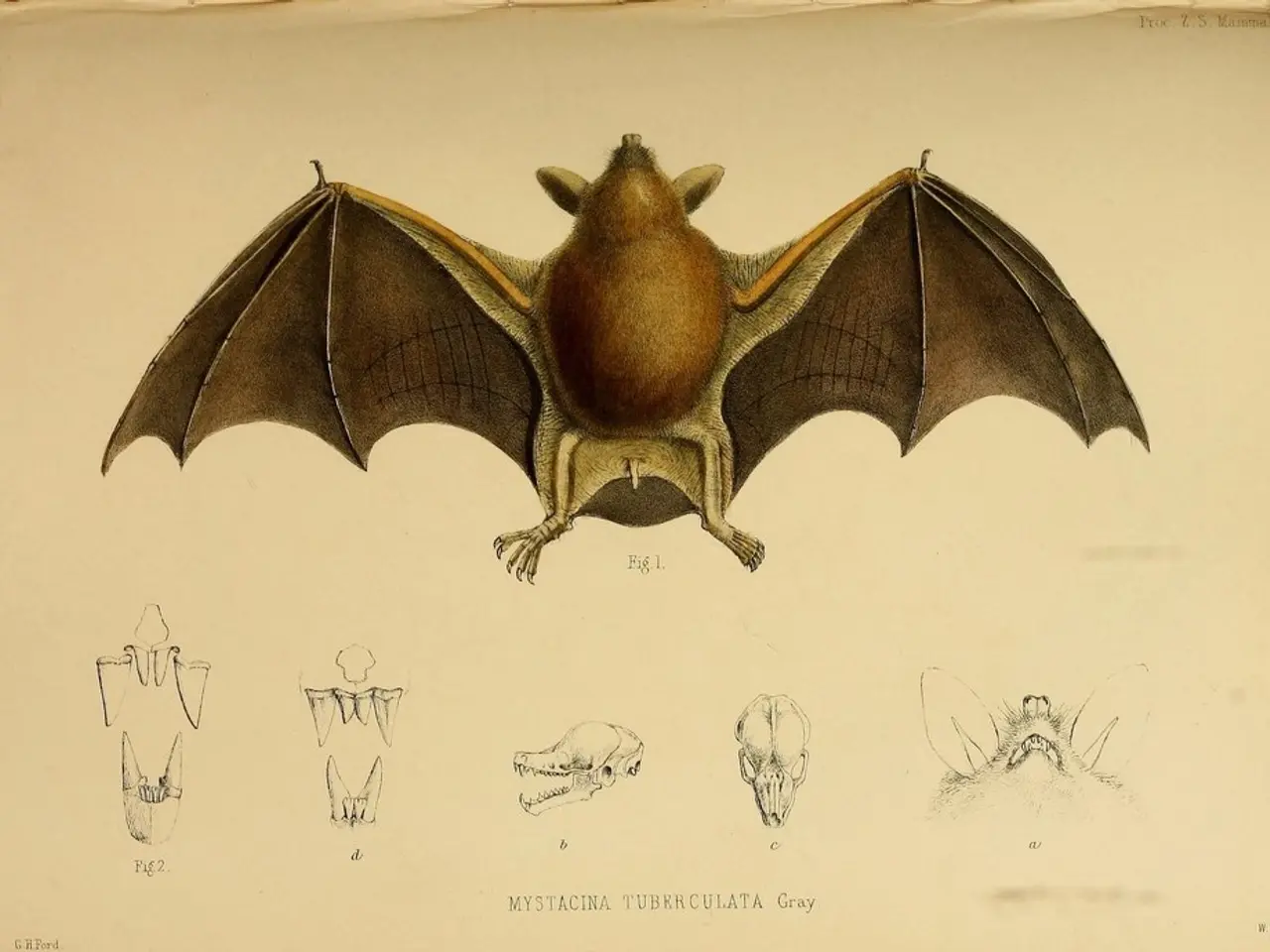Nuclear energy tap: diamond batteries convert radioactive material into electricity, marking a pivotal moment in the technological sphere of energy production
Revolutionary Nano-Diamond Batteries Offer Sustainable Energy Solution
Nano-diamond batteries, first introduced in 2016 by researchers at Bristol University's Cabot Institute, mark a significant advancement in renewable energy technology. These batteries, designed to last up to 28,000 years, offer a sustainable alternative to traditional batteries with exceptional longevity and the elimination of frequent recharging needs.
The unique working principle of nano-diamond batteries lies in the radioactive decay of isotopes embedded in a diamond semiconductor structure. Specifically, a radioactive isotope like nickel-63 emits beta particles (electrons) as it decays, and these particles interact with diamond semiconductor layers to produce an electric current through the conversion of nuclear energy into electricity.
The construction of these batteries involves a very thin radioactive source (e.g., a 2-micron-thick nickel-63 layer) sandwiched between ultra-thin single-crystal diamond semiconductor layers (about 10 microns thick). Diamonds are used because of their excellent semiconductor properties and radiation hardness, allowing for safe, stable, and long-lasting energy conversion.
Potential Applications
The potential applications of nano-diamond batteries are vast and diverse. In space exploration, they can provide continuous, reliable power over extremely long durations, which is critical for deep-space probes, satellites, or missions where replacing or recharging batteries is impossible. Their resistance to extreme temperatures (operative from -60°C to 120°C) and high safety under radiation and impact are highly suitable for harsh space environments.
In the realm of electric vehicles (EVs), integrating these batteries could dramatically extend driving ranges with minimal degradation over time because decay provides steady energy without typical chemical wear. This could reduce the need for frequent recharging and battery replacement, though current power output per cell is low, so many units in series would be required.
The compact size, long-lasting power, and safety features also allow drones to operate much longer than current lithium-ion battery-powered models. Ultra-lightweight and durable radioactive diamond batteries could enable drones that fly for months or indefinitely without stopping to recharge, important for surveillance, delivery, or environmental monitoring in remote areas.
Summary Table
| Aspect | Description | |----------------------|------------------------------------------------| | Working Principle | Radioactive isotope decay + diamond semiconductor energy conversion | | Radioactive Isotope | Nickel-63 | | Battery Components | Thin radioactive layer sandwiched by diamond semiconductors | | Advantages | Long lifespan (decades), temperature tolerance, radiation hardness, safety (non-flammable) | | Space Exploration | Reliable long-term power in extreme conditions | | Electric Vehicles | Potential for extended range and lifespan | | Drones | Enable extended or continuous flight durations |
If mass-produced on a larger scale, these batteries could revolutionize the energy industry by transforming nuclear waste into resources and contributing to a greener and more sustainable energy lifecycle. The aerospace industry first considered nuclear batteries during the 1950s and 60s for their reliability and longevity. The idea of nuclear batteries dates back to 1913, and their history underscores the constant evolution of nuclear technologies and their future potential.
NDB Inc. has innovated high-power nano-diamond batteries by merging synthetic diamonds with nanotechnology. Polycrystalline diamond (PCD), obtained by chemical vapor deposition (CVD), plays a crucial role in the production of radioactive diamonds for these batteries. Radioactive methane containing carbon-14, an isotope found in nuclear reactor graphite blocks, is incorporated during the CVD process to produce radioactive diamonds.
The potential applications of these batteries extend beyond space exploration, electric vehicles, and drones. This development marks a potential turning point for sustainable nuclear waste management. As research and development continue, nano-diamond batteries may soon become a reality in various sectors, offering a cleaner, safer, and more sustainable energy future.
- The innovation in nano-diamond batteries, initially presented in 2016, signifies a substantial leap forward in environmental-science, particularly regarding renewable-energy technology.
- The unique technology behind nano-diamond batteries allows for exceptional longevity, up to 28,000 years, making them a promising alternative to traditional batteries that necessitate frequent recharging.
- The climate-change mitigation potential of these batteries lies in their ability to provide a steady energy source without the typical chemical wear, contributing to sustainable-living and a greener environment.
- In the finance sector, investments in the development and mass-production of these batteries could stimulate economic growth and promote industry advancement in the realm of energy.
- The lifestyle implications of nano-diamond batteries could be significant, enabling greater energy independence, reduced utility bills, and a smaller carbon footprint in homes and gardens through the adoption of sustainable-living practices.
- The home-and-garden applications of these batteries, once available commercially, could range from powering smart devices to storing solar or wind energy for later use, thereby supporting a more eco-friendly household.
- As the technology behind nano-diamond batteries continues to progress through research and development, it is plausible that these batteries will find their place in various sectors, providing an innovative and sustainable solution to energy needs across the globe.




